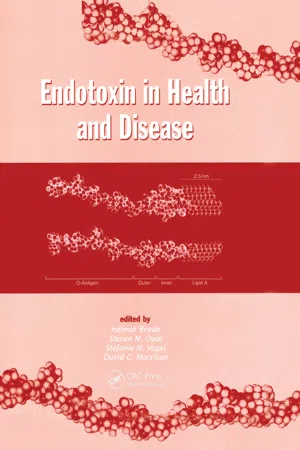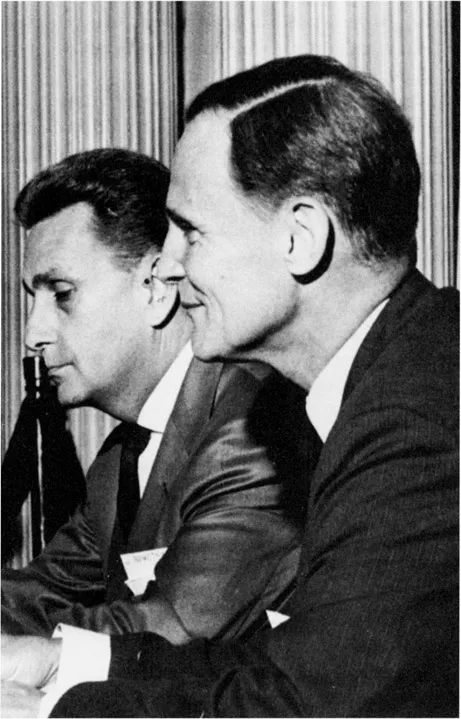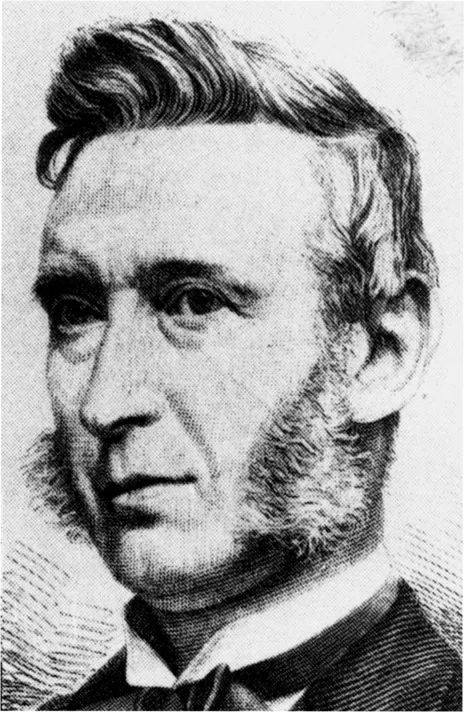
This is a test
- 968 pages
- English
- ePUB (mobile friendly)
- Available on iOS & Android
eBook - ePub
Endotoxin in Health and Disease
Book details
Book preview
Table of contents
Citations
About This Book
Offering a basis for further research into the interactions of hosts and pathogens, this work gathers up-to-date findings, and details basic structures, functions and immunology. It provides descriptions of a variety of experimental endotoxin neutralizing agents, as well as a guide to clinical research initiatives and the latest treatments.
Frequently asked questions
At the moment all of our mobile-responsive ePub books are available to download via the app. Most of our PDFs are also available to download and we're working on making the final remaining ones downloadable now. Learn more here.
Both plans give you full access to the library and all of Perlego’s features. The only differences are the price and subscription period: With the annual plan you’ll save around 30% compared to 12 months on the monthly plan.
We are an online textbook subscription service, where you can get access to an entire online library for less than the price of a single book per month. With over 1 million books across 1000+ topics, we’ve got you covered! Learn more here.
Look out for the read-aloud symbol on your next book to see if you can listen to it. The read-aloud tool reads text aloud for you, highlighting the text as it is being read. You can pause it, speed it up and slow it down. Learn more here.
Yes, you can access Endotoxin in Health and Disease by Helmut Brade in PDF and/or ePUB format, as well as other popular books in Medicina & Endocrinología y metabolismo. We have over one million books available in our catalogue for you to explore.
Information
1
Endotoxin: Historical Perspectives
Research Center Borstel, Borstel, Germany
Clinique La Prairie Research Institute, Montreux, Switzerland
Bacteriological research cannot be sufficiently advanced without knowledge of its historical development. A scientist must know what has been achieved and what information has been accumulated in the field he works in. What self criticism would one or the other have expressed with regard to his own work, had he been aware of the historical developments in bacteriology.
Maybe, numerous papers would have never been published.
Friedrich Loeffler* (1852–1915)
* Coworker of Robert Koch, discoverer of Corynebacterium diphtheriae and Salmonella typhimurium, Professor for Hygiene at the University of Greifswald, Director of the Robert Koch-Institute in Berlin, Germany (1).
INTRODUCTION
The very first international conference dedicated primarily to bacterial endotoxin took place in New York in the year 1952. It was organized by Florence Seibert (1897–1991), a pioneer in pyrogen research (Fig. 1), who introduced a sensitive test for pyrogenicity in rabbits (2). In her introductory remarks to the 1952 conference, she said: “The isolation of a pure and stable pyrogen with well defined chemical and biological properties which could be easily reproduced, would furnish a valuable standard for the evaluation of pyrogen use” (3). Obviously, at that time the exact nature of pyrogens was not yet known, but from one of her studies she concluded: “The pyrogen is a filterable product produced by a specific bacterium …” (4). In her attempts to identify the pyrogenic material that contaminated pharmaceutical drugs and infusion fluids, she always ended up with such small amounts of what may have been the pyrogenic substance that a characterization of the material was impossible. Florence Seibert called the elusive bioactive material her “little blue devil,” showing both her affection towards and frustration with the material that would later turn out to be endotoxin. One of her students, Dennis W. Watson, working with her in 1939 in Philadelphia will play, as described later in this chapter, an important role in one of the most exciting chapters of the history of endotoxin research, i.e., the identification of the bioactive principle of endotoxin.

Fig. 1 Florence Seibert (1897–1991) receiving the Achievement Award from Eleanore Roosevelt (right) at the White House (1944).
The second major endotoxin conference, and the first one in Europe, was organized by Otto Westphal and took place in Freiburg, Germany, in August 1958. The conference was planned to be held in the then most comfortable, fashionable, and recognized hotel in the center of the city of Freiburg, the Colombi. Two weeks before the opening ceremony of the meeting, the Saudi Arabian king Ibn Saud had come to Freiburg for a medical consultation with Professor Ludwig Heilmeyer, a leading physician and head of the University Clinic for Internal Medicine. Heilmeyer had once saved the life of the most beloved daughter of Ibn Saud and, therefore, was highly esteemed by the king. Ibn Saud had not arrived unaccompanied: with him had come an enormous number of family members, friends, and servants. The royal group occupying the hotel was scheduled for the flight back home a few days before the start of the endotoxin conference, but one day before that date, Ibn Saud decided to extend his stay in Freiburg. For the organizers of the endotoxin conference this was a disastrous decision. As nobody dared to prompt the Saudis to leave the hotel as scheduled, within 2 days new rooms for the approximately 50 symposium guests had to be found—a formidable task since it was the main summer season and all major hotels were completely booked. But after the first shock, all went well: the meeting took place in the demonstration rooms of a local photoshop (Photo Stober) and the guests were dispersed in the many hotels of the nearby Black Forest area. Finally, the conference guests began to enjoy spending beautiful nights and mornings in the mountains, and the whole affair created great amusement, the sessions being animated by a particularly good spirit. One evening session was held in a hotel on top of the second highest mountain of the Black Forest, the Belchen. Just after its start (the subject was “Endotoxin and the Properdin System”), an enormous thunderstorm with heavy lightning blew out all electricity, so that the session had to be continued with candlelight and without projection of slides. Many participants still remember the great spirit of this early symposion with all its improvivations at the last minute. These pioneering endotoxin conferences were followed by many others with increasing frequency (at almost annual intervals) with an increasing number of scientists from all over the world attending.
Due to the initiative, enthusiasm, and endurance of the late L. Joe Berry (1910–1987), professor of micro-biology at the University of Texas, Austin (Fig. 2), the International Endotoxin Society (IES) was founded in the year 1988 with the late Alois Nowotny (1922–1992), professor of immunology at the University of Pennsylvania, Philadelphia, being the first president (Fig. 3). This Society grew rapidly and today represents with its approximately 600 members one of the larger international scientific organizations. As another important step, in 1994 the Journal of Endotoxin Research (JER) was founded, with David C. Morrison, Kansas Masons Distinguished Professor of Cancer Research at the University of Kansas Medical Center, being the first editor-in-chief. Within its short life, the Journal has gained significant scientific recognition, which is expressed by its remarkably increasing ICI citation index. The many conferences, the creation of the IES, and the establishment of the JER are true witnesses to the particular and still growing academic and industrial interest in bacterial endotoxin.

Fig. 2 L. Joe Berry (1910–1987), founder and father of the International Endotoxin Society (IES).

Fig. 3 Alois Nowotny (1922–1992), first president of the IES, together with Otto Westphal (honorary member of the IES) at the occasion of an endotoxin conference in New York (1966).
The fascination associated with this bacterial product certainly relates to its manifold and diverse biological activities, its complex and unique chemical and physical structure, its serological properties, and its physiological function for bacteria (5). Endotoxins are formed by a certain group of bacteria, which differ from other microorganisms by the unique architecture of their cell wall and are termed gram-negative bacteria. Endotoxins are known to be integral components of the cell wall of these microorganisms and to be essential for bacterial growth and viability. Endotoxin has, therefore, attracted the interest of microbiologists and bacterial geneticists who wanted to understand its biosynthesis and the molecular basis of its vital function for bacteria. Endotoxins are potent toxins that, in higher organisms, can elicit a broad spectrum of harmful effects and that contribute to the pathogenic potential of bacteria. Endotoxins, therefore, intrigued clinical and biological researchers who set out to elucidate their mode of action and to devise strategies aiming at control of the detrimental endotoxin effects observed during bacterial infection and sepsis. Depending upon the amount and route of introduction, endotoxins are also capable of producing beneficial effects in higher organisms. Thus, endotoxins belong to the most active stimulators of the mammalian defense system. They induce the formation of antibodies not only to themselves but also to unrelated antigens, and they activate immune cells resulting in the body’s enhanced capacity to cope with microbial infections as well as malignant tumors. Endotoxins have, therefore, become a major subject of immunological and immunochemical research. They even seem to be involved in the normal development of the host’s defense system and in the physiological interplay between bacteria and mammalian organisms. Endotoxins have accompanied the phylogenesis of higher organisms as they appeared as constituents of blue-green algae 2 billion years ago—long before the ascent of man. On the other hand, endotoxins are often feared—like they were by Florence Seibert—by researchers in cellular immunology and related fields: small amounts of endotoxin are ever-present and may contaminate glassware, recombinant proteins, culture media as well as sera, hybridoma supernatants, and research tools or reagents in general. Endotoxin expresses bioactivity in extremely small doses, and a number of examples are known where a biological phenomenon ascribed to a certain compound turned out to be due to the activity of a contaminating endotoxin. Finally, endotoxins possessing a complex primary structure and an even more complex three-dimensional architecture have always fascinated chemists and physicists who wished to elucidate those structures that are responsible for endotoxin activity and function and to modify the structures in such a way that they loose their toxic properties while still displaying beneficial, e.g., immunostimulating, effects.
Many excellent volumes and reviews cover early and recent scientific progress in these fields of endotoxin research, which has led to the recognition that endotoxins not only represent powerful poisons, but also the O-antigens of gram-negative bacteria, and that they chemically constitute lipopolysaccharides (5–9). Only occasionally, however, has the story been described of those pioneering scientists and medical doctors who paved the way for the discovery of endotoxin and the elucidation of its chemistry and biology (10–12). In the present review, which may at certain sections unintentionally express a more personal view of events—the preendotoxin era is described as well as major developments that gradually led to the identification of endotoxin and the characterization of its chemical structure and toxic region.
INITIATION OF ENDOTOXIN RESEARCH
Through the work of Albrecht von Haller (1708–1777) and other physicians and scientists, it was recognized that intravenous injection of putrid fluids, e.g., obtained from decomposing organic matter such as putrid fish or meat, into experimental animals evoked fever and other manifestations of illness (13). As extracts from fresh fish or meat did not produce febrile reactions, it appeared that during decomposition and putrefaction a fever- and disease-producing toxic principle was formed. Franìois Magendie (1783–1855), director of the medical service of the oldest Parisian hospital, L’Hôtel-Dieu, intelligently pointed to the frequent observation of physicians about the unhealthy influence of nonhygienic conditions like those in and around major harbors. Here, masses of material of plant and animal origin underwent deterioration and putrefaction, and here severe illnesses occurred, including plague and cholera. Magendie asked the fundamental question, whether there might exist a connection between putre-faction, toxin production, and the initiation of fever or disease (14).

Fig. 4 Peter L. Panum (1820–1885).
Magendie performed the most revealing experiments with filtrates of putrid fish studying primarily the host response. He did not try to purify the bioactive principle of his toxic fluids. Exactly this problem, however, was addressed by the Dane Peter L. Panum (1820–1885), then associated professor of physiology and pathology at Kiel, Germany (Fig. 4). Panum attempted to characterize the putrid poison, work that now can be considered as the initiation of systematic and scientific en...
Table of contents
- Cover
- Half Title
- Title Page
- Copyright Page
- Preface
- Contents
- Contributors
- 1 Endotoxin: Historical Perspectives
- 2 Lipopolysaccharide and the Permeability of the Bacterial Outer Membrane
- 3 Lipopolysaccharide Phase Variation in Haemophilus and Neisseria
- 4 Antigenic Mimicry in Neisseria Species
- 5 Antibiotic-Induced Endotoxin Release: Important Parameters Dictating Responses
- 6 Complement-Mediated Lipopolysaccharide Release
- 7 Chemical Structure of Lipid A: Recent Advances in Structural Analysis of Biologically Active Molecules
- 8 Chemical Structure of the Core Region of Lipopolysaccharides
- 9 The Chemistry of O-Polysaccharide Chains in Bacterial Lipopolysaccharides
- 10 The Chemistry and Biology of Lipooligosaccharides: The Endotoxins of Bacteria of the Respiratory and Genital Mucosae
- 11 A Biophysical View on the Function and Activity of Endotoxins
- 12 Lipopolysaccharide Preparations in Aqueous Media: Implications for Solution Versus Suspension
- 13 Chlamydial Lipopolysaccharide
- 14 The Chemical Synthesis of Lipid A
- 15 Chemical Synthesis of Core Structures
- 16 Microbial Pathways of Lipid A Biosynthesis
- 17 Biosynthesis and Genetics of Lipopolysaccharide Core
- 18 Genetics and Biosynthesis of Lipopolysaccharide O-Antigens
- 19 Lipopolysaccharide-Binding Protein
- 20 Bactericidal/Permeability-Increasing Protein, pl5s and Phospholipases A2, Endogenous Antibiotics in Host Defense Against Bacterial Infection
- 21 Interactions of Lipopolysaccharides and Lipoproteins
- 22 Effects of Human Hemoglobin on Bacterial Endotoxin In Vitro and In Vivo
- 23 LPS/Lipid A-Binding Synthetic Peptides
- 24 The Interaction of Lipid A and Lipopolysaccharide with Human Serum Albumin
- 25 Endothelial Cell Activation by Lipopolysaccharide: Role of Soluble CD14
- 26 Scavenger Receptors and Lipopolysaccharide
- 27 The Role of Platelet-Activating Factor in Endotoxin-Related Disease
- 28 CD14, An Innate Immune Receptor for Various Bacterial Cell Wall Components
- 29 The Role of MAP Kinases, Phosphatidylinositol 3-Kinase, and Ceramide in LPS-Induced Signaling in Macrophages
- 30 Endotoxin Effects on Synthesis of Phosphatidic Acid and Phosphatidic Acid-Derived Diacylglyceride Species
- 31 Endotoxic Shock and the Sphingomyelin Pathway
- 32 Role of NF-κB in Macrophage Activation
- 33 Internalization of Lipopolysaccharide by Phagocytes
- 34 Multifunctional G Proteins: Implication in Endotoxin Cellular Responses
- 35 Immediate Cytokine Responses to Endotoxin: Tumor Necrosis Factor-a and the Interleukin-1 Family
- 36 Platelet-Activating Factor in Sepsis: An Update
- 37 Interleukin-10 and Other Suppressive Cytokines
- 38 Nitric Oxide as a Signaling Molecule in the Systemic Inflammatory Response to LPS
- 39 Studies of the Primate Inflammatory Hemostatic Axis and Its Response to Inflammatory Mediators
- 40 Biological Functions of Lipopolysaccharide Antibodies
- 41 Specificity and Neutralizing Properties of Cross-Reactive Anti-Core LPS Monoclonal Antibodies
- 42 Effects of Lipopolysaccharide on T Cells
- 43 Immunological Properties of Microbial Outer Membrane Proteins and Their Effects as Modulators of LPS Immunobiology
- 44 Opsonization of Actinobacillus actinomycetemcomitans by LPS-Directed IgG Antibodies in Sera of Juvenile Periodontitis Patients
- 45 Apoptotic Cell Death in Response to Lipopolysaccharide
- 46 Nontoxic RsDPLA As a Potent Antagonist of Toxic Lipopolysaccharide
- 47 Synthetic Endotoxin Antagonists
- 48 Bacteria-Induced Hypersensitivity to Endotoxin
- 49 Genetic Control of Endotoxin Responsiveness: The Lps Gene Revisited
- 50 Endotoxin Tolerance
- 51 Glucocorticoid Control of Endotoxin Responses
- 52 Gene Knockout Technology and the Host Response to Endotoxin: Role of CD14 and Other Inflammatory Mediators
- 53 Endotoxemia in Primate Models
- 54 The Value of Animal Models in Endotoxin Research
- 55 Pathophysiological Responses to Endotoxin in Humans
- 56 Endotoxin Detection in Body Fluids: Chemical Versus Bioassay Methodology
- 57 The Relevance of Endotoxin Detection in Sepsis
- 58 The Role of Gut-Derived Endotoxin in the Pathogenesis of Multiple Organ Dysfunction
- 59 Therapeutic Approaches Targeting Endotoxin-Derived Mediators
- 60 Human Responses to Endotoxin: Role of the Genetic Background
- 61 Endotoxin, Antibiotics, and Inflammation in Gram-Negative Infections
- 62 Lipopolysaccharide from Oral Bacteria: Role in Innate Host Defense and Chronic Inflammatory Disease
- 63 Endotoxin and Cancer
- 64 The Future of Endotoxin Research
- Index